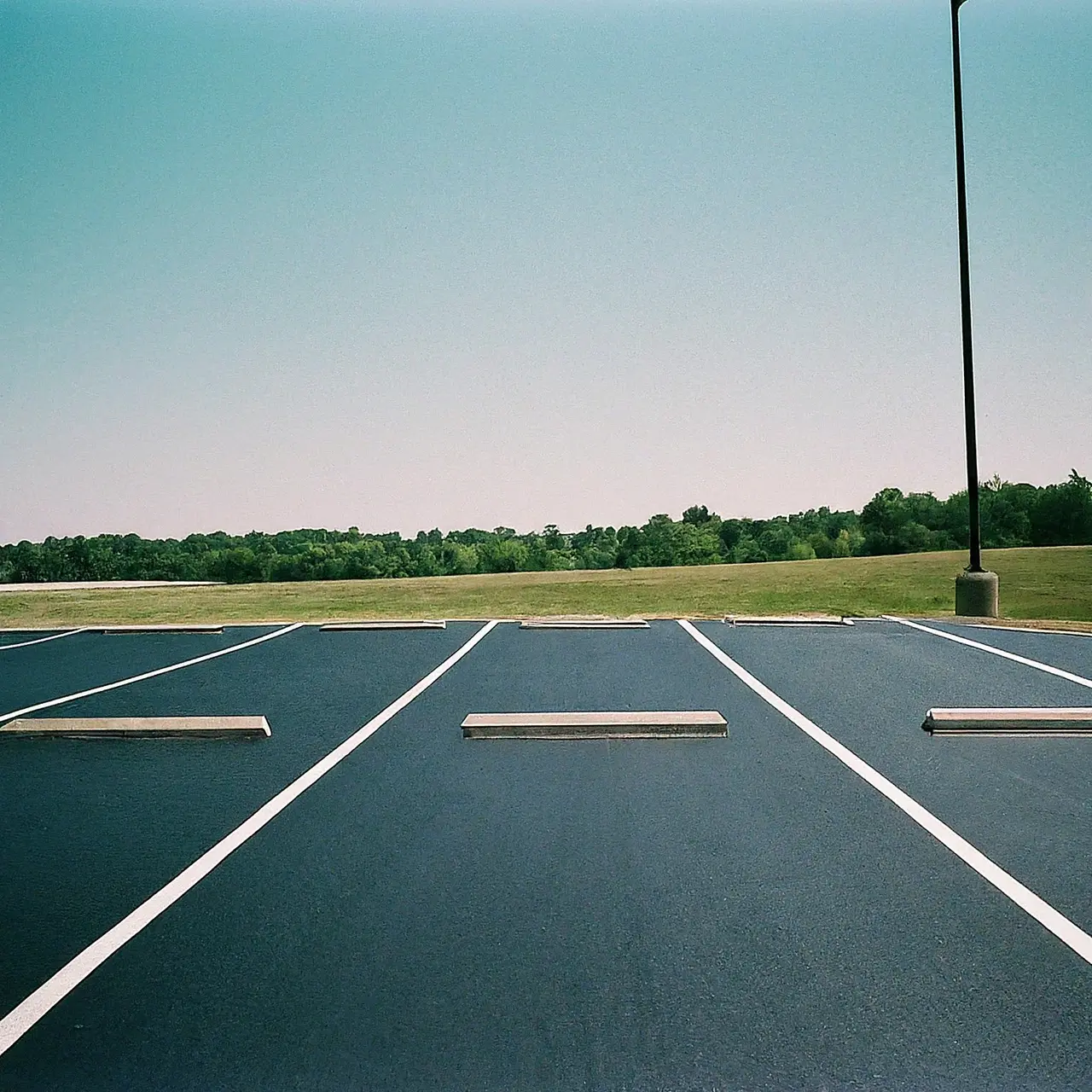Discover how parking lot sealcoating can be your asphalt’s shield against time and elements, ensuring its longevity.
Understanding Parking Lot Sealcoating
Parking lot sealcoating is a preventive maintenance measure that involves the application of a protective layer over the asphalt. This layer protects against water penetration, UV rays, and chemical spills—three critical enemies of asphalt longevity.
By forming a barrier, sealcoating prevents the asphalt from becoming brittle and developing cracks, a common precursor to more significant damages.
It’s also worth noting that sealcoating enhances the visual appeal of a parking lot, giving it a fresh, new look that speaks volumes about the property’s upkeep.
The Benefits of Sealcoating Your Asphalt
The primary benefit of sealcoating is its ability to extend the life of asphalt surfaces significantly. Regular maintenance, including sealcoating, can double the lifespan of a parking lot’s pavement.
Sealcoating also offers a smooth, black finish to parking lots, enhancing line visibility and overall safety.
Moreover, it’s an economically savvy choice. By protecting the asphalt from damage, property owners save on costs associated with repairs and resurfacing.
Lastly, it protects against oil spills and leaks from vehicles, which can penetrate asphalt and cause it to break down prematurely.
How Often Should You Apply Sealcoat to Your Parking Lot?
The frequency of sealcoating depends on several factors, including climate, the volume of traffic, and the current condition of the asphalt. Generally, it’s recommended every two to three years.
Properties in areas with harsh winters or high rainfall might need to sealcoat more frequently due to increased exposure to elements that can accelerate damage.
The Step-by-Step Parking Lot Sealcoating Process
The sealcoating process begins with a thorough cleaning of the parking lot surface to remove debris and allow for optimal adhesion.
Cracks must be filled prior to sealcoating to ensure a smooth, uniform surface.
After preparation, the sealcoat material is either sprayed or squeegeed over the asphalt, requiring a dry, sunny day for proper curing.
Post-application, the parking lot should remain closed to traffic for at least 24 hours to allow the sealcoat to dry effectively.
Common Mistakes to Avoid in Sealcoating
Applying sealcoat too frequently can lead to a buildup that makes the parking lot slippery, especially in wet conditions.
Ignoring prep work, like filling cracks and cleaning the surface, can result in a poorly adhered coat that fails to protect as intended.
Evaluating the Long-Term Advantages of Sealcoating
The long-term benefits of regular sealcoating include not only extended pavement life and reduced repair costs but also an ongoing aesthetic appeal that positively reflects on the property.
As asphalt ages, its color fades and it becomes more susceptible to damage; sealcoating periodically refreshes its appearance and barrier protection.
FAQs: Common Concerns About Parking Lot Sealcoating
Is sealcoating necessary for new asphalt? While new asphalt doesn’t require immediate sealcoating, starting maintenance within the first year can protect and prolong its lifespan.
Can sealcoating fill existing potholes? Sealcoating is not designed to fill potholes. Pothole repair should be addressed prior to the application of a sealcoat.
How long does a sealcoat last? A properly applied and maintained sealcoat can last up to three years, depending on usage and environmental conditions.
Does weather affect the sealcoating process? Yes, sealcoating requires specific temperature ranges and dry conditions for application and curing.
Why Your Parking Lot Deserves Sealcoating
Considering everything, parking lot sealcoating represents not just an investment in the appearance of a parking lot, but a commitment to its longevity and durability. Regularly applied, it can significantly reduce the need for costly repairs, keeping the asphalt functional and visually appealing for years to come.

